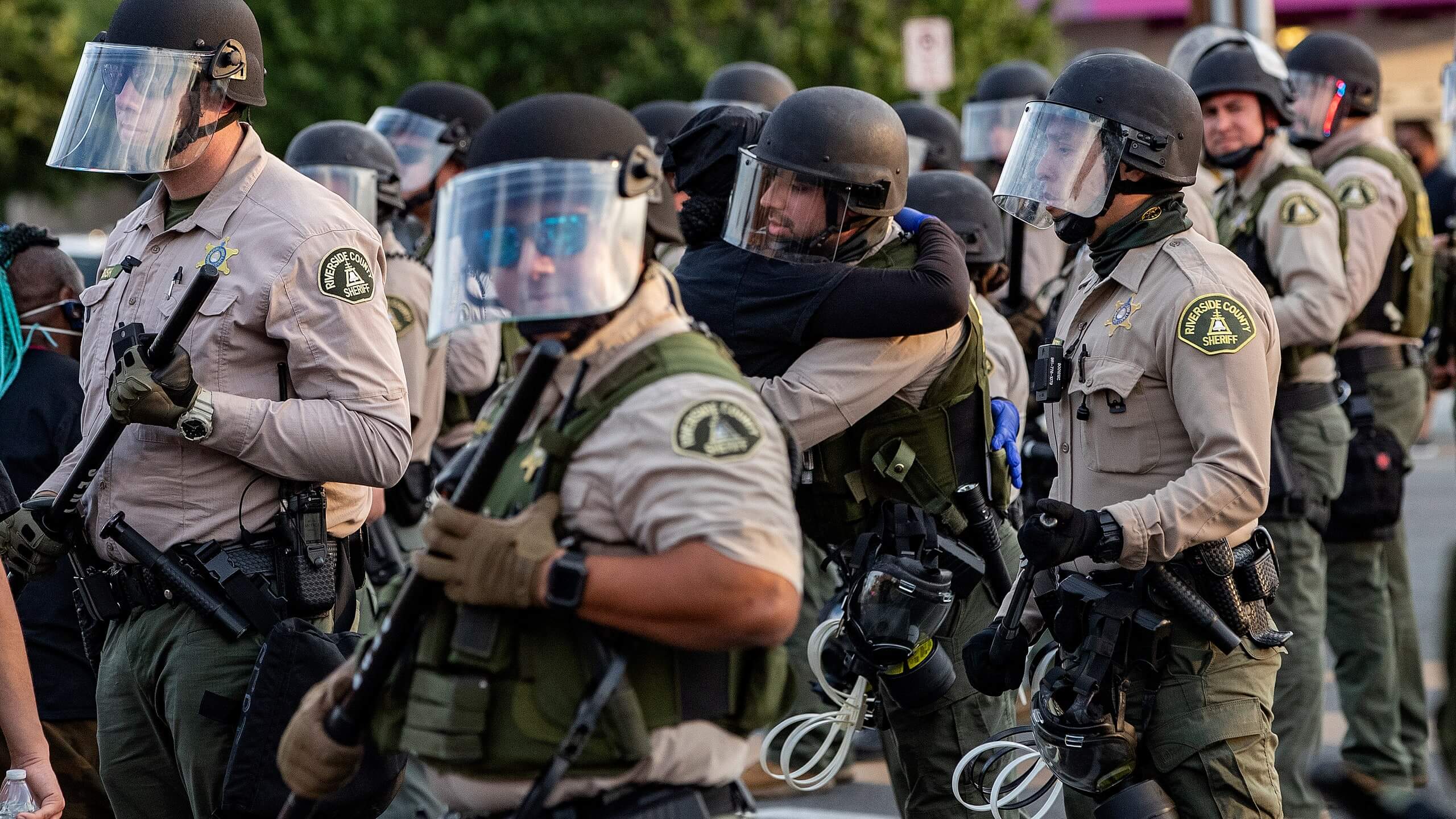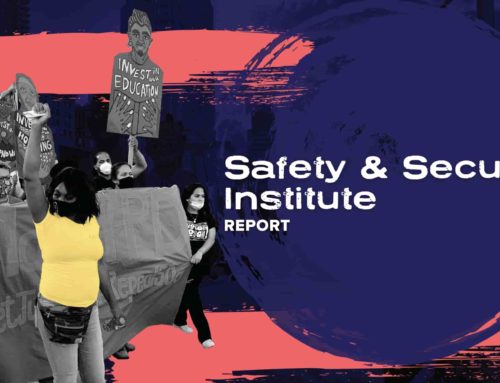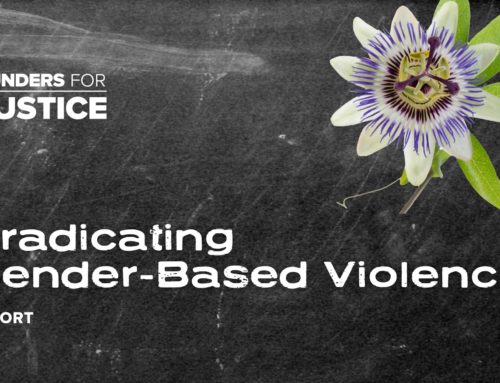This op-ed argues that copaganda serves to undermine the movement for Black lives.
I’d like to start with an exercise. First, take a deep breath in and out to help ground yourself. Think about a time when you felt safe. Where are you? Who do you see? Can you hear anything? Smell anything? Paint the details stroke by stroke until the picture becomes clear in your mind. Maybe you see a friend, teacher, or a family member; perhaps you see a place, like your bedroom or homeland. Through my work as a media activist, for years I have facilitated and participated in this exercise many times, in many places, with people of varying ethnic and socioeconomic backgrounds. Not once has anyone ever included a police officer in their image of safety.
As the U.S. program manager at the human rights organization WITNESS, part of my job involves training communities to document abuses by state actors like police and Immigration and Customs Enforcement (ICE) to use for evidence and advocacy. We’re seeing in real time how critical that documentation is in exposing law enforcement abuses at both the state and federal level, galvanizing people to pour into the streets in support of Black lives, and combating false reports about protesters and victims of police violence. But in the same way that we’re using cell phone cameras, storytelling, and social media to share the truth and keep ourselves safe, many police departments are also using these tools to depict themselves as kind, heroic, fun-loving community members whose niceness can outweigh the actions of a few “bad apples.” This is called copaganda.
Sometimes copaganda is created by police officers themselves, like this country music video released by the Metro Nashville Police Department that features Sergeant Henry Particelli singing with his guitar as people held signs that read “Peace” and “United We Stand, Divided We Fall.” That police department and many others around the country are turning to social media posts to help counter negative narratives and boost images, like this one, where white police officers pose with a Black child holding a Black Lives Matter sign, or this one from Austin, which shows police officers with all the thank-you mail they claimed to have received from members of the community. Other times, social media videos of police officers kneeling, hugging protesters, or posts of them offering snacks and their tears to little Black girls and boys, as the fearful children shake and cry, are promoted by the general public, and even allies and activists. The focus of these videos is supposed to be on the kind nature of individual police officers, but it’s important to remember that each friendly officer also has a gun on their hip and holds qualified immunity, a legal doctrine that, as explained by The Appeal, can effectively shield officials like police from accountability for misconduct, such as when they use excessive force. Take, for example, the Ohio “dancing cop,” a white police officer who went viral in 2015 for a video in which he danced outside with Black children. That officer was investigated and eventually cleared, in 2019, after body camera footage surfaced of him punching a Black man in the face.
We’ve also seen numerous examples from around the country where police officers kneel with protesters one minute and abuse and disregard their constitutional rights the next. A demonstrator in Orlando shared an image of officers praying with protesters, with the text: “Literally 45 minutes later [members of the department] maced us in the face for the crime of standing in their vicinity.” Another protester in New York City tweeted a video of police officers taking a knee, with the text: “They beat the living shit out of us one hour after this.” And after the highest-ranking uniformed NYPD officer was filmed on his knees linking arms with protesters in the street, reports continued of his department kettling crowds, beating them with batons, and pepper-spraying demonstrators across the city. This pattern raises the question: Are these police officers really standing in solidarity with Black lives or are they engaging in performative displays that subdue the public?
As copaganda continues to circulate and resurface, as it always does after any high-profile police violence case, I ask those who are interested in supporting Black lives to think critically, and be skeptical of what you’re viewing before you share or internalize it. Cops don’t need your help promoting their image; they already have the funding, power, and protective policies on their side to do it themselves. Instead of uniting us, copaganda serves to undermine the movement for Black lives, advance the narrative that police violence is an issue of individual bad cops as opposed to a systemic one, and minimize the very real violence and trauma police cause to Black communities.
Niceness is neither an antidote to police violence nor the reason people are taking to the streets in the middle of a global pandemic. They’re in the streets because according to a 2017 report, the U.S. spends more than $100 billion annually on policing. They’re angry that so many healthcare workers were forced to work without adequate supplies of protective gear at the start of the pandemic; that teachers are being asked to risk their lives to return to work, while spending money out of their pockets for basic school supplies; and that evictions are expected to soar as tenants struggle to make rent. People are disturbed by qualified immunity, and the fact that we live in a country where police officers can kill a woman while she sleeps and face no consequences. They are hurting from years of being over-policed, surveilled, and verbally and physically abused. So until police officers also advocate to defund their budgets, invest in Black communities, support transparency with disciplinary records, urge their unions to retract endorsements for Trump, provide body camera footage to the public, and break the code of silence, they are not a part of the solution and should not be glorified as such.
I understand why people gravitate toward copaganda. Between a racial crisis and a pandemic, we’re tired. It’s in our nature to be hopeful, but it’s important to understand when that need for positivity becomes toxic. For some, copaganda videos provide comfort that not all cops are killers, but no revolution has ever been won comfortably. Social justice change is painful, messy, and slow. Just as I see people gravitate toward copaganda, I also hear them repeat the same question to preface any difficult conversation about police and privilege: “But aren’t there good cops?” That question is not productive or relevant to the very real issue of Black people being killed by police officers with impunity. No number of videos showing officers conveying basic human decency can address systemic police violence. The better question to ask is, “Why aren’t those good cops doing anything to support Black lives?”
Instead of sharing copaganda videos to foster hope, what if we reframed what hope looks like? What if we shared images of volunteer street medics treating and supporting injured protesters? Or the wall of moms who formed a human chain to block federal agents in Portland? What if we shared photos and videos of the various mutual aid groups across the country handing out water, snacks, masks, and other supplies to protesters on the streets? The videos and images that get shared during protests shape how history is told and our futures are imagined. So, before you post, remember the movement is not fighting for more cops, even nice ones, but rather real investment and community-led/centered solutions to support Black lives. Think back to that image of safety you painted in your mind at the beginning of this piece, and look around you to see that we’re really the ones who are serving and protecting. That’s something to be hopeful about.



